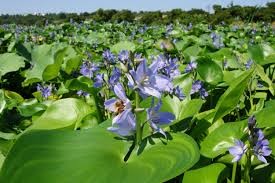




Disclaimer: Copyright infringement not intended.
Context
Definition of IAS and issues with the definition
Impacts of invasive species in India
Impact native flora and fauna
Examples-
Economic Impacts
Other impacts
Initiatives taken at the National Level
International Instruments and Programmes on Invasive Species:
|
Examples of Invasive Alien Species in India The list of invasive wildlife in India is dominated by certain species of fish such as the African catfish, Nile tilapia, red-bellied piranha, and alligator gar, and turtle species such as the red-eared slider. Some of the prominent examples of Invasive Alien Species in India are: Lantana (Lantana Camara) ●Lantana is a highly invasive shrub that forms dense thickets, and outcompeting native vegetation. It is found in various parts of India, particularly in the Western Ghats.
Water Hyacinth (Eichhornia Crassipes) ●This aquatic plant proliferates, forming dense mats on water surfaces. It is common in water bodies across India.
Prosopis juliflora (Vilayati Keekar) ●This invasive plant has spread rapidly, leading to the degradation of native ecosystems. It is found in arid and semi-arid regions across India.
Needle Bush ●Its origin is from South America. It is distributed throughout India. It is found in thorny scrub and dry degraded forests and often creates close thickets.
Black Wattle ●Its origin is from South East Australia. It is distributed throughout India. It was introduced for afforestation in the Western Ghats region. It regenerates rapidly after fire and forms dense thickets.
Goat Weed ●Its origin is from America. It is distributed throughout India. It acts as an aggressive colonizer. Its troublesome weed in gardens, cultivated fields, and forests affects the native species.
Prickly Poppy ●It also acts as an aggressive colonizer. It is a winter-season weed found in cultivated fields, scrublands, and fringes of forests. |
Source: https://indianexpress.com/article/explained/invasive-species-natural-ecosystems-threaten-9262836/
|
PRACTICE QUESTION Q. "Critically examine the socio-economic and ecological impacts of invasive alien species on native ecosystems and human livelihoods.”(250 words) |






© 2026 iasgyan. All right reserved